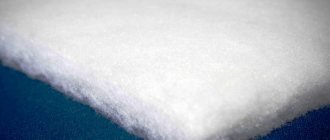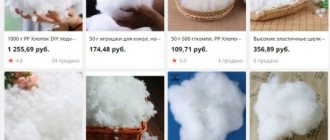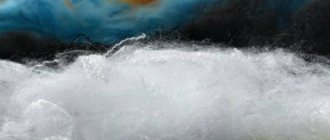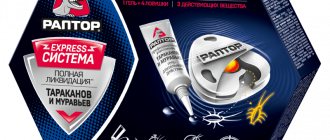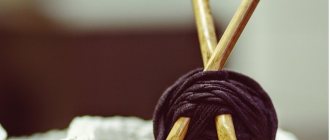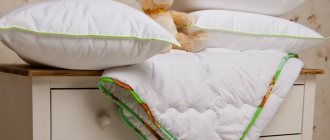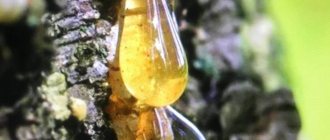Although natural fillers are in constant demand, not every person is ready to completely switch to using only them. This applies to fur coats, leather jackets, and down jackets. Some people simply can’t afford it, others don’t like the fact that animals were killed to create clothes. At the same time, the question “what to wear in winter?” needs to be decided every year. For these purposes, the chemical industry produces a large number of different synthetic insulation materials, which are designed to protect people from the cold, although there are other areas of application. One of these new materials is holofiber, which already has a good reputation among buyers.
General information and manufacturing technology
Holofiber insulation is a hypoallergenic fabric consisting of spring-like synthetic fibers. The method of its manufacture was invented at the European enterprise Termopol. Thanks to the cavities sealed on both sides, clothes with such filling have good thermal conductivity. Today this is one of the most popular insulating fabrics. Bonding of synthetic threads occurs through heat treatment at a temperature of 180 degrees. As a result, component migration is reduced.
An aerodynamic method for forming polyester fibers is also used. They are located chaotically, at an angle. The combed synthetic threads are directed by air currents entering the mesh drum. This is how a layerless web is formed. The method is absolutely safe, since no glue or other chemicals are used.
Area of use of building thermal insulation
"Holofiber - STROY" is actively being introduced into insulation:
- external walls of houses;
- roofs of any kind;
- floors in the middle of industrial buildings;
- basements, especially those with very high humidity;
- sloping roofs with a weak or unreinforced frame;
- internal walls;
- non-residential premises of the attic.
Holofiber also used as an ingredient for thermal insulation on the outside when laying “well” type, and for external panels for walls it is hardly a bad option. Best heat insulator
suitable for houses made of sawn, glued, corrugated timber, traditional logs or calibrated logs.
The material serves as an excellent inter-crown heat insulator in log or cobblestone buildings, creating competition for flax, jute, flax wool and moss. Among its positive qualities are:
- no need for caulking;
- ignoring hydrometeors ( the heat insulator
simply will not absorb them); - compression to almost zero thickness under load and return to its original shape after it is weakened;
- there is no need for additional sealing of interpanel seams.
If the consumer is lucky enough to find heat insulator on the counter of a building materials store, it is necessary to purchase samples with a density of more than 300 g/cu. m. This material is suitable for the average climate of the continent with low temperatures during winter of the order of? 25 degrees, however, in general, preference should be given to much denser and heavier representatives.
Being a good replacement for flax, jute and moss (for inter-crown insulation) and mineral wool with foamed polymer (thermal insulation of houses), holofiber
is slowly but correctly conquering the Russian construction market.
Its parameters deserve attention and make it possible to use a thermal insulator in buildings made of any materials.
Installation of holofiber is carried out in the same way as min. cotton wool, thanks to this, it will not be difficult for both experienced and novice construction workers to master a new skill and verify the effectiveness of the heat insulator.
Filler properties
Most of the properties of synthetic insulation are characteristic of analogues. Among them are the following aspects:
- Due to special processing of raw materials, holofiber is not resistant to combustion.
- The filler allows air to pass through, like all its types.
- Polymer fibers have a low adsorption capacity, so the insulation does not retain foreign odors.
- The fabric is non-toxic, as evidenced by numerous certification tests.
- Holofiber is one of the popular fillings for children's clothing that does not cause irritation when in contact with the skin.
- Polymer threads are resistant to tearing, the fibers hardly shrink after washing.
Holofiber has the ability to quickly restore its shape.
How to distinguish holofiber from padding polyester in a product by touch
Without experience, it is difficult to determine padding polyester products from a hollafider. The easiest way to do this is to compare two things. You can determine the synthetic padding filling and distinguish it from the hollafider by the following characteristics:
- Synthetic padding fabric can be layered into several layers. It is impossible to do this with a hollafider;
- When stretching the padding polyester, you can hear a slight creaking or crunching sound; after removing the load, the padding polyester does not restore its size. When bent and held for some time, small folds can be noticed on the padding polyester, which will not be the case with the hollafider. When stretched and compressed, the hollafider does not make any sounds.
There are still not so obvious differences between the hollafider:
- White color with shine and no tints or dullness;
- Loose and silky surface without the slightest trace of a denser surface layer.
Types of material and their application
The filler is produced in several types, each with certain properties and differences. Pillows, down jackets, and soft toys are filled with polyester fibers in the form of balls. The roll form is used in the production of mattresses and bumpers for children's beds. Sheet filler is used in construction.
| View | Description |
| Medium | This type is sold in rolls with a density of 200 to 500 g/m2. The thickness is 2-5 cm. Holofiber is used as a filter material, as a filler for mattresses. |
| Hard | This is a rigid insulation with a high density - up to 3000 g/m2. This type of holofiber is produced in sheets and rolls. It is used for furniture, insulation, mattresses. |
| Software | Used for the production of down jackets and demi-season jackets. Soft 100 is suitable for demi-season clothing, insulating backpacks and mittens. Marked 300, the material is intended for travel equipment and things that provide warmth in temperatures down to -5 degrees. The surface is smooth on both sides, there are a large number of small fibers inside. |
| Volumetric | This is a volumetric variety used in the production of down jackets and upholstered furniture. It is designed for temperatures down to -30. |
| PAFS | Material in the form of synthetic balls of sizes 5-7 mm. They are used to stuff bedding and children's toys. The variety is sold by weight. PAPS made in China is the most affordable, and Korean products are of the highest quality. |
| Foot | Winter shoes are filled with this material. It is comparable in properties to Hard, but more elastic. The foot does not wrinkle, durable. |
Curious facts
Space technology! Employees of the Baikonur complex wear standard uniforms (workwear) designed for sudden temperature changes using holofiber.
Heat-protective suits for astronauts have also been developed using holofiber. It is also interesting that the Patriarchate has developed special insulated winter cassocks for priests using light and comfortable holofiber. A kind of uniform.
Holofiber hollow fiber technology was developed by analogy with hollow reindeer hair . Thus, a synthetic fiber was developed that largely replicates the texture of the fur of deer in the far north - hollow hairs with microscopic air capsules and a tight fit.
Holofiber perfectly withstands
extremely low temperatures and successfully passed half-life tests at -67 degrees.
Extreme test. The holofiber filler was subjected to prolonged boiling for 3 hours. And retained its properties. Similar tests are not carried out with other materials, since no artificial material is able to withstand boiling. The synthetic winterizer will fall apart, imported analogues lose their shape, crumple, and lose volume. Holofiber passed the test thanks to the hollow texture of the fibers.
Density options and temperature conditions
Hollow fiber filling for jackets is designed to be worn at different air temperatures, depending on the density. Such outerwear is affordable, it costs one and a half times less than things with natural insulation. Holofiber is not inferior in quality and ease of wear.
Important! Before purchasing outerwear, you should pay attention to the density of the filler. This figure determines what temperature the sock is designed for.
| Density g/m2 | Temperature |
| 100 | +10 to +5 |
| 150 | +5 to -10 |
| 200 | -10 to -20 |
| 300 | -20 to -30 |
Average prices
The cost of holofiber is affected by the variety. It is cheaper than Thinsulate, but more expensive than padding polyester. Average retail price:
| Variety | Unit | price, rub. |
| Volumetric | meter | 86 — 93 |
| Software | meter | 66 — 78 |
| PAFS | kg | 230 — 238 |
| Hard | meter | 247 — 263 |
Pros and cons, comparison with analogues
Holofiber insulation has many positive properties, but there are also some disadvantages.
| pros | Minuses |
| Strength, resistance to deformation | Many people find it hot to sleep on bedding with holofiber filling. |
| Low maintenance | It is not advisable to wash things with holofiber in an aggressive mode and at high temperatures, so as not to lose elasticity. |
| Durability | After washing, outerwear should be straightened to straighten the fibers. |
| Hygiene | |
| Breathability | |
| Moisture resistance | |
| Excellent heat-regulating properties | |
| Hypoallergenic | |
| Ease | |
| Fire resistance |
Natural fluff
Down is widely used for the production of outerwear. The most popular are goose and swan. The products are very warm, but allergenic. Bacteria can multiply in the material, and clothes take a long time to dry. The filler is durable and warms even at -25. The disadvantages of the analogue include its heavy weight and ability to absorb moisture. The material is a little outdated, as more modern analogues have appeared.
Sintepooh
This is an artificial substitute for swan's down. The threads of these fibers are spiral-shaped and treated with silicone. Things with this filling are lightweight and keep you warm in frosts down to -25. The fibers are hypoallergenic and contain no toxic materials. They do not harbor parasites or microbes. Clothing with synthetic padding can withstand cold temperatures down to -30, ideal for frosty weather. The products are wear-resistant and do not lose their presentation for a long time.
Comforel
This is an artificial filler produced in the form of siliconized fibers twisted into ball shapes. There are many similarities between comforter and holofiber. These are new generation insulation materials, hypoallergenic. Due to their polyester nature, they are elastic and breathable. Things made from these materials are easy to care for, they are easy to wash and dry quickly. The products last a long time. Comforel insulation is more resistant to moisture and dries faster. Holofiber also boasts the ability to soundproof. Its springs are softer and last longer.
Ecofiber
The filler is synthetic, one of the safest materials from an environmental point of view. It is preferred by people prone to allergies. It is 100% polyester in the form of hollow balls. Inside each there are up to 7 channels filled with air. The material has high thermoregulation. Things made from ecofiber are light, elastic and soft. The filler is often used in the production of pillows and children's toys.
Author:
Anastasia Kukushkina
I hope you enjoy the article I have prepared for you! If you find errors in it, write to me about it! I will answer any questions you have, ask them!
